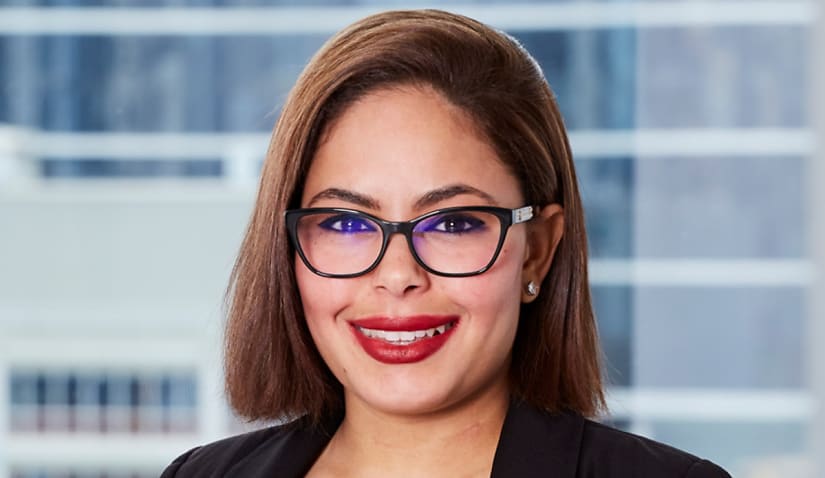It’s time we started seeing inequality for what it is – a risk to women’s safety. The old way of doing things is no longer enough to comply with legal obligations, writes Sapphire Parsons.

Last week, for the first time in Australian history, the Workplace Gender Equality Agency (WGEA) published individual employer gender pay gaps for employers with 100 or more employees. You can read Lawyers Weekly’s reporting on the nation’s biggest law firms and their pay divides here.
Let’s look at the statistics:
Why is this the case?
The explanations given by employers for the extent of their gender pay gaps included that “men dominate higher-paying profit-and loss-management roles, while women are more represented in lower-paying supporting HR and marketing roles … (and) … It’s still women, not men, who generally take paid parental leave career breaks”.
Why does this matter from an anti-discrimination perspective?
Under s 47C of the Sex Discrimination Act 1984 (Cth), employers now have a positive obligation to take reasonable and proportionate measures to eliminate, as far as possible, discrimination on the grounds of sex.
Under the Australian Human Rights Commission’s Guidelines for Complying with the Positive Duty Under the Sex Discrimination Act 1984 (Cth), proactive steps employers can take to comply with the positive duty include considering gender balance across the entire organisation, considering the make-up of senior leadership teams, gender pay gaps, promotion and retention data and career outcomes for people with caring responsibilities.
What’s the link between gender inequality and safety?
The Australian Human Rights Commission recognises that gender inequality “cannot be disentangled from other social injustices because gender inequality frequently intersects with other forms of structural and systemic discrimination … This means that the value afforded to women and men is not afforded in the same way …”
In the Victorian Supreme Court of Appeal case of Austin Health v Tsikos [2023] VSCA 82, where a female manager was earning less than her male peers, the court found that the unfavourable treatment Christina Tsikos experienced was made up of several components, including “structural inequality and unconscious bias” impacting her pay outcomes.
Unequal pay is part of a continuum of inequality that drives harm against women, including sexist jokes, disrespect, sexual harassment, physical and emotional abuse, rape, sexual assault, and ultimately murder.
Why does this matter for employers?
Employers have an obligation to eliminate and, if this is not possible, reduce risks to health and safety. Sexual harassment and gendered violence are now recognised psychosocial hazards that can have significant safety implications for workers, including anxiety, post-traumatic stress disorder (PTSD), and, in the worst cases, even suicide.
Low worker diversity (e.g., the workforce being dominated by one gender, age group, race or culture) and power imbalances along gendered lines are key risk factors for harmful behaviour such as sexual harassment and violence, according to the 2022 Safe Work Australia Model Code of Practice for Managing Psychosocial Hazards at Work.
It’s hardly surprising, then, that the industries with some of the most significant rates of harmful behaviour also have the highest rates of structural inequality.
In 2019, a report by the Victorian Legal Services Board and Commissioner (LSBC) found that “women in [professional services] experienced higher rates of sexual harassment than the [Australian Human Rights Commission] found was the case for women in all Australian workplaces”.
In 2022, WorkSafe’s Regulatory Impact Statement for the Occupational Health and Safety (Psychological Health) Regulations Amendment 2022 identified high-risk industries for psychosocial hazards, including manufacturing, construction, and public administration.
In the construction industry, in Matthews v Winslow Constructors (Vic) Pty Ltd [2015] VSC 728, an employee was awarded over $1,000,000 for psychiatric illness arising because of workplace abuse, bullying and sexual harassment.
In the professional services industry, in Ewin v Vergara (No 3) [2013] FCA 1311, an accountant, Claudio Vergara, was ordered to pay $476,163 to his former manager, Jemma Ewin, for engaging in sexual harassment and sexual assault against her in a workplace context.
How does this impact women more broadly?
At a national level, one woman is killed every 15 days in Australia, two in five women (39 per cent) have experienced violence since the age of 15, and approximately 90 per cent of women have experienced sexual harassment in their lifetimes.
In 2020, Mark Finnane, Andy Kaladelfos and Susanne Karstedt noted in their article published by the University of NSW, “Femicide: An Intractable History”, that “violence against women is an expression of women’s inequality”.
Key findings of a briefing to the European Parliament in November 2021, Femicide and Its Causes and Recent Trends – What Do We Know, included that “female victimisation is more closely linked with the structural characteristics of societies, such as gender roles and statuses, as well as gender inequality … Vulnerability of victims is higher when … measures to close the gender inequality gap are lacking”. This was consistent with the 2019 United Nations’ Global Study on Homicide – Gender-related Killing of Women and Girls.
It’s time we started seeing inequality for what it is – a risk to women’s safety. The old way of doing things is no longer enough to comply with legal obligations.
Sapphire Parsons is a senior associate at Macpherson Kelley. In 2023, she won the Workplace Health and Safety category at the 30 Under 30 Awards, and in 2022, she won the Rising Star of the Year (SME Law) category at the Women in Law Awards.